GUIDELINES SCIENCE OF GYMNASTICS JOURNAL (SCGYM®)
Science of Gymnastics Journal is an international journal that provide a wide range of scientific information specific to gymnastics. The journal will consider both empirical and theoretical contributions related to gymnastics from the natural, social and human sciences for publication. It is aimed at enhancing gymnastics knowledge (theoretical and practical) based on research and scientific methodology. We welcome articles concerned with performance analysis, judges' analysis, biomechanical analysis of gymnastics elements, medical analysis in gymnastics, pedagogical analysis related to gymnastics, biographies of important gymnastics personalities and other historical analysis, social aspects of gymnastics, motor learning and motor control in gymnastics, methodology of learning gymnastics elements, etc. Manuscripts based on quality research and comprehensive research reviews will also be considered for publication. The journal welcomes papers from all types of research paradigms.
The journal publishes full- length original empirical and theoretical articles, review articles, short reports, case studies, letters to the editor and preliminary research reports contributing to gymnastics knowledge. All manuscripts must contain abstract and keywords immediately after the tittle and authors. Original articles present original empirical and theoretical articles on various aspects of gymnastics. Although there is no set length limit, it is recommended that they be no longer than 4,000 words (up to 12 pages), without references. There should be maximum of 40 references.
Original articles should be written concisely using the scientific format: abstract (including keywords), introduction, method (including participants, instruments and procedure), results, discussion, conclusions (not obligatory), acknowledgement (not obligatory) and references. Theoretical papers should draw on existing research literature and should critically analyse selected models and/or theories, only reporting empirical results if they are directly related to theory. A review article should critically evaluate material that has already been published. The aim of a review article is to analyse, evaluate, and synthesise current knowledge, not simply reproduce what is already known. Review articles should consist of the following sections: abstract (including keywords) problem definition, summary of previous research, explanation of subject matter, contradictions, problems and suggestions for further research, conclusions, acknowledgement (not obligatory) and references. Preliminary research reports should present the findings of empirical research that is still in progress, and should be written using the same format as the Empirical Papers described at the beginning of this section; however, these reports should be shorter in length than a standard paper. Reports on professional practice should demonstrate academic rigour, preferably through analysis of program effectiveness, elaborating on mere description of practice. Manuscripts should be prepared according to the instructions (please see below). Manuscripts not complying with the following requirements and directives for process, style, and format will not enter the peer-review process.
Submission of a manuscript implies that it has not been published previously, that it is not under consideration for publication elsewhere, and that if accepted it will not be published elsewhere in the same form, in English or in any other language. The editors reserve the right to make any final adjustments to the manuscript to ensure consistency within the journal. Each manuscript, meeting the technical standards and falling within the aims and scope of the journal will be subject to double-blind review by two independent reviewers. Authors should retain a copy of their manuscript as we cannot accept responsibility for damage or loss of papers.
SUBMISSION OF ARTICLES SCGYM uses ScholarOne Manuscript central System and manuscripts must therefore be submitted electronically. For complete instructions on how to do so, go to
http://mc.manuscriptcentral.com/sgj
and follow the instructions for creating an account and submitting a manuscript. On submission, authors are requested to nominate two expert reviewers for their manuscript; these potential reviewers must not have been informed about their nomination and should not be a member of the author's institutions.
GENERAL GUIDELINES FOR MANUSCRIPT PREPARATION
The submission should include a cover letter stating that the manuscript contains original material only that has not previously been published, and is not currently under consideration elsewhere, nor will be submitted elsewhere until a final decision has been made by the journal.
The cover letter should be signed by the corresponding author. Cover letter 1st page of cover letter: The 1st page of cover letter should contain the manuscript title and running head in English. The running head is an abbreviated title printed at the top of each page of the manuscript and should be a maximum of 50 characters, including letters, punctuation, and spaces. The corresponding author should be identified (include affiliated institution, full address, telephone and fax numbers, and e-mail address). Co-authors full name and affiliated institution must be provided. The cover page shall include the following statement: "The undersigned Authors transfer the ownership of copyright to the journal Science of Gymnastics, should their work be published. We declare that the article is original, has not been submitted for publication in other journals and has not already been published. We also declare that the research reported in the paper was undertaken in compliance with the Helsinki Declaration and the International Principles governing research." The cover page must be signed by the first author. 2nd page of cover letter: The 2nd page of cover letter should contain the article abstract, written in English. The abstract should not exceed 250, covering the main factual points: background, aim of study, methods, results and conclusions. Authors are requested to supply a maximum of eight key words describing the content of the manuscript. cover letter sample - zavihek.
Text and titles: - Manuscript Title: uppercase (e.g., 16-point Times New Roman, bold) should be used. - Manuscript abstract: lowercase, Italic, bold (e.g., 12-point Times New Roman) should be used for tittle abstract (e.g. Abstract). Text of abstract: lowercase, Italic (e.g., 12-point Times New Roman) should be used for the text of abstract. Keywords: lowercase, Italic, bold (e.g., 12-point Times New Roman) should be used for the tittle Keywords and lowercase, Italic, not bold (e.g., 12-point Times New Roman) should be used for the text (e.g. Keywords: artistic gymnastics, women, vault, European championship) - Manuscript sections titles: uppercase (e.g., 12-point Times New Roman, bold) should be used. Manuscript sections titles are: introduction, methods, results, discussion, conclusions, acknowledgement (not obligatory) and references. - Manuscript subsections titles: lowercase (e.g., 12-point Times New Roman, bold, Italic) should be used. Manuscript subsections titles are any titles within introduction, methods, results, discussion sections (e.g. in method: participants, instruments and procedure). - For text a normal, plain font (e.g., 12-point Times Roman) should be used. - Use single spacing with page and set margins at 2.5 cm - Within text use italics for emphasis (if needed). - Use tab stops or other commands for indents. - To make tables, use the table function, not spreadsheets. - Use the equation editor for equations. - All tables and figures should be into the text. - Abbreviations: Only use standard abbreviations. Avoid using abbreviations in titles and abstracts. The word or term to be abbreviated should be stated in full the first time, immediately followed in parentheses by the abbreviation that will be used afterwards. Standard measurement units are an exception to this rule. -
Manuscript should be prepared and submitted as blind version (without any authors and institutions on manuscript). All the data needed are in cover letter.
Manuscripts should adhere to the guidelines set out in the Publication Manual of American Psychological Association (6th Edition, 2010). The guidelines applied to all citations, references, tables and figures. Introduction: State the purpose of the paper, the reasons for the research, and (briefly) any relevant findings from previous studies. Method: Give a detailed account of how the study was conducted. The participants, phenomena, or objects under observation should be described in detail. Any instrument, measurement tools, or apparatus used in the study should be explained. The procedures should be described in sufficient detail that other researchers could replicate the study if so desired. Results: Use tables and figures sparingly, using them only to qualify any statements made in the text. Do not duplicate information with tables and figures. Define any statistical terms, abbreviations and symbols. Units should be reported using the international metric system, using decimal points, not commas. Results should be presented in a logical order. Do not repeat results from tables or figures in the text, present only important findings. Discussion: The aim of the discussion section is to evaluate and interpret the implications of the results, particularly with regards to the aim of study. Discuss the implications of the findings for future research and practice, and highlight a methodological limitations of the study. Compare your work with previous research, highlighting ways in which your study adds to current knowledge. Any conclusions made should be supported by what was found in your study. Conclusion: The aim of conclusion is to point out new findings or information or a new connection brought on by your manuscript. Connect your manuscript to the bigger picture. Acknowledgement (not obligatory): Acknowledgments of people, grants, funds etc. should be placed in a separate section after the discussion or conclusions and before the references. The names of funding organizations should be written in full.
References: All statements, findings or thoughts that are not your own should be supported by references. References should adhere to the American Psychological Association in the Publication Manual of the American Psychological Association, 6th Edition guidelines, 2010. We strongly recommend to use reference manager such as Mendeley (www.mendeley.com), to avoid necessary rejection by the editorial board. Mendeley is a free of charge reference manager.
Figures: Figures (photographs, sketches, schemata, diagrams, algorithms and other graphical material) should be provided in camera-ready form, suitable for reproduction (which may include reduction) without retouching. Photographs, charts and diagrams are all to be referred to as "Figure(s)" and should be numbered consecutively in the order in which they are referred to. Figures should accompany the manuscript and should be included within the text. All figures should be prepared using computer software. Each figure should have a number and a title below the figure. Legends should appear at the foot of the figures if needed. If figure contain symbols, arrows, numbers or letters, these should be explained in the legend. Line drawings should be supplied on good quality white paper using black ink. Lettering, graph lines and markings on graphs should be sufficiently large and bold to allow for clear reproduction diagrams are resized for inclusion in the journal. All figures (illustrations, drawings, and photographs) should be original, as photocopies are difficult to reproduce to a good standard. Headings of the figure should adhere to the guidelines set out in the Publication Manual of American Psychological Association (6th Edition, 2010) (e.g., 12-point Times New Roman).
Tables: Tables should be placed within manuscript, numbered consecutively and given a suitable caption. No vertical lines should be used, horizontal lines only between the table title and column headings, between the column headings and the main body of the table! Tables should accompany the manuscript and should be included in the text. Tables should not exceed the page length (19.5 cm). Headings of the table and the table should adhere to the guidelines set out in the Publication Manual of American Psychological Association (6th Edition, 2010) (e.g., 12-point Times New Roman). For text into the tables, a normal, plain font (e.g., 11-point Times New Roman) should be used. Tables should not duplicate results presented elsewhere in the manuscript (e.g. in tables). All the necessary explanations and a legend of the abbreviations have to be provided.
Equations: Equations should be simplified where possible and checked carefully for accuracy. Place short and simple equations in the text, ensuring that they do not project above or below the line. When reporting complex equations, start with a new line with double space above and below the equation. Number equations consecutively, with the number in brackets near the right margin of the page. Where it is not suitable to include complete equations in the text, the author should send the complete equation in a separate file. When special characters are used, and there may be ambiguity to the meaning, there should be an explanation in an accompanying note in the margin.
Reviewing: All manuscripts, written according to the instructions will be evaluated via blind review at least by two reviewers. Other will be rejected by the editorial board. The reviewers are chosen by the editor based on the content of the article. The review process normally takes about 4-6 weeks. After the review process has been completed the corresponding author will be notified by e-mail of the acceptance, revision or rejection of the manuscript. Authors should revise their work according to the reviewers' suggestions and resubmit the revised manuscript online via http://mc.manuscriptcentral.com/sgj . Authors should also submit a list of changes or a rebuttal against each point raised together with the revised manuscript. In the revision, authors should indicate the presence of new text using red font colour (without changing the font type or underlining). The Editorial Board guaranties confidentiality during the reviewing and publication process. The submitted material will not be returned. Corresponding author of the accepted articles will be informed when their article will be accepted for publications.
Templates:
SCGYM Cover letter sample
SCGYM figure sample
SCGYM Guidelines Science of Gymnastics Journal
SCGYM references sample
SCGYM Table sample








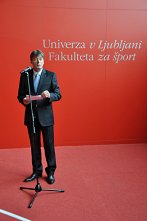

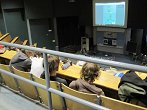
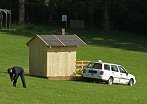

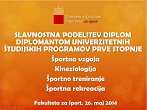

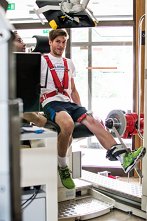
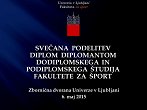











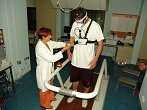
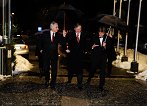




.png)